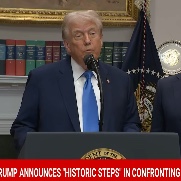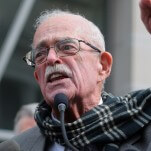What You Need To Know About Jameis Winston's Accuser
LatestA week after State Attorney Willie Meggs closed the rape investigation against FSU football player Jameis Winston, and a day before Winston is to be awarded the Heisman Trophy in a lavish New York City ceremony, the complainant’s attorney has spoken out with the accuser’s side of the story.
Attorney Patricia Carroll pointed out that the Winston affair, “was an investigation into the victim, not into the accused,” a refrain that frustratingly reflects the way many rape investigations are still handled. Even if the accused turns out to be garbage at football. Don’t believe me? Then let’s recap how the police handled the investigation into the story of Jameis Winston’s accuser.
Witnesses Say that
the Encounter Seemed Consensual
First Carroll pointed out how Casher and the second witness Ronald Darby’s descriptions didn’t match up with each other, such as when one said that they saw the accuser sit on the bed and perform oral sex on Winston, while the other said she was on her knees.
The Tallahassee police were inconsistent in their reporting as well. For instance, Carroll pointed out that in one part of Angulo’s report, he wrote that the suspect was 6’2″, and then that he was between 5’7″ and 5’11” in another part. He also first wrote that the accuser couldn’t describe or identify the apartment that the crime took place in, but in the second half of the report he said that she could.
From watching Chris Casher’s videotaped testimony, the
teammate with Winston that night, Carroll observed that he also admitted to
videotaping Winston and the accuser during the incident, but then deleting it
later on. She questioned why the police didn’t follow up on that admission, since recording people having sex without their knowledge is illegal, and since deleting the video later could be construed as tampering with evidence.
For all the bleating people do about an alleged rape victim’s credibility (see the comments here), they seem to forget that the same can and should be applied to the accused, his or her witnesses, and the investigators as well. Sure, the inconsistencies that Carroll pointed could be explained away; it’s funny that we never think to extend the same courtesy to the accuser.
-

-

-

-

-

-

-

-

-

-

-

-

-

-

-

-

-

-

-

-

-

-

-

-

-

-

-

-

-

-

-

-

-

-

-

-

-

-

-

-








































